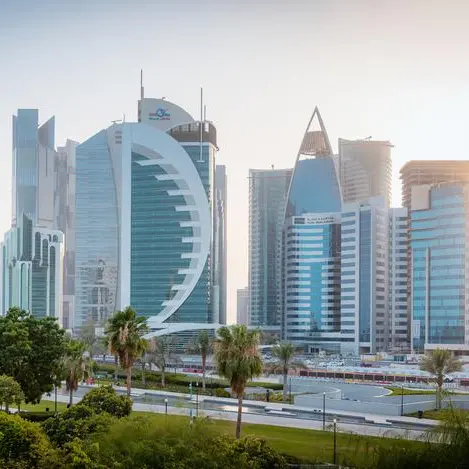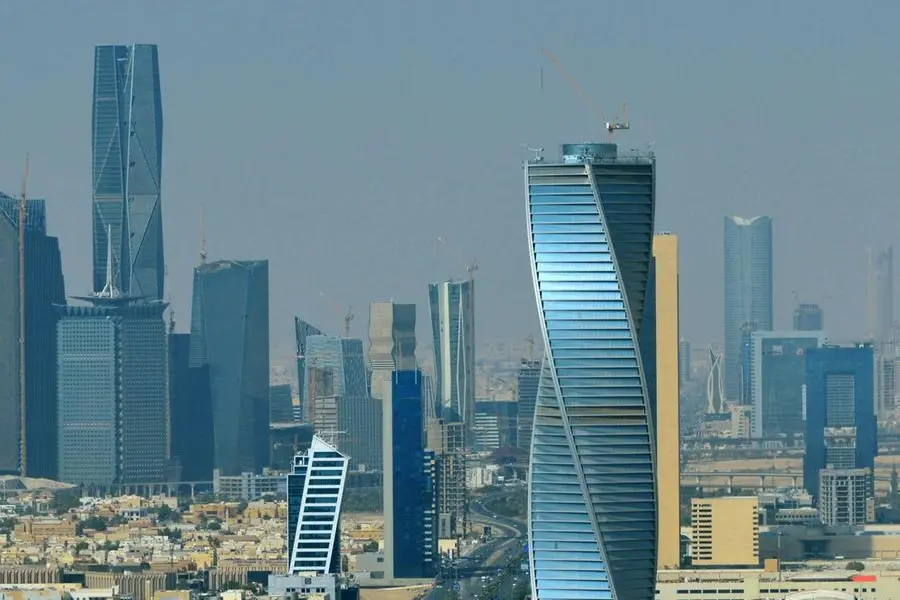Water availability in the Gulf is expected to decline further as a result of climate change and human-induced quality problems, the United Nations warns in a stark report on the world's water resources.
Gulf states are in one of the most water-stressed regions in the world, and their problems are compounded as their formidable hydrocarbons sector is an insatiable consumer of water.
Risk management consultancy Maplecroft counts the six Gulf states, along with Yemen and Egypt, among the 10 most water-stressed countries in the world.
While hydrocarbons take up majority of the consumption, the Gulf states' all-round economic growth and rising populations are also making huge demands on already-meager water supplies.
The region's population is expected to reach 70 million by 2050, from its current level of 45 million. Some estimates show the Gulf's water and power consumption is rising 7% annually.
"This demographic growth, along with accelerated socio-economic development, has led to a substantial increase in water demand, placing further stress on scarce and mainly non-renewable water resources in the region," the report warned.
"Growing water demand has also necessitated the use of more energy for the provision of water supply. It is estimated that water services currently account for at least 15% of national electricity consumption in most of the Arab countries. This share is continuously on the rise."
THIRSTY ENERGY SECTOR
The Middle East's water use for energy production is rising at a rate of 1.3% per annum till 2035 - compared with the global average of 0.7% during the period, according to the International Energy Agency.
"Water scarcity is a major constraint on water use for energy production in the Middle East, where the energy sector's absolute water use and water intensity are strikingly low and will remain low till 2035," the IEA said in its World Energy Outlook.

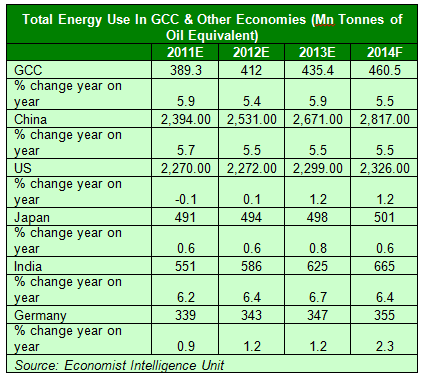
"The region's fleet of power plants is adapted to scarce water conditions, employing significant capacity that depends little on freshwater availability, including combined-cycle gas turbines and combined water and power facilities, situated on the coast to meet demand for both energy and water."
Indeed, Gulf states have one of the highest concentration of desalinated water plants in the world, and authorities are pouring in billions to ensure that they continue to meet demand.
Desalination, however, is a very hydrocarbon-intensive process, which is eating into the Gulf states' crude oil exports.
Saudi Arabia, which has 18% of the world's desalination capacity, will need to divert 25% of its domestic oil and gas output to produce water through cogeneration power desalting plants (CPDPs).
"If the current trend continues, this share will reach as high a 50% by 2030," the UN noted.
Saudi Arabia is expected to spend SAR 67 billion (USD 18 billion) on new desalination projects, which would consume another 300,000 barrels per day.
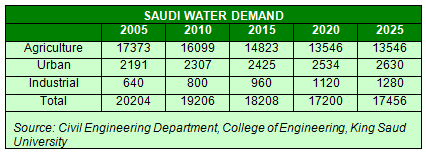
In Kuwait, if current growth trends persist, the country will need to divert nearly 2.5 million barrels per day of oil production to produce water by 2035. Kuwait's current oil capacity stands at around 3 million bpd.
TURNING TO ALTERNATIVE SOLUTIONS
The Gulf states are working hard to ensure these alarming statistics do not come to pass.
Part of the solution is to invest heavily in alternative energy sources such as solar and nuclear power. In Saudi Arabia, the King Abdul-Aziz City for Science and Technology is desalinating water by using nanotechnology to produce solar energy and water desalination membranes at low cost. The first phase has already begun producing 30,000 cubic meters of water per day.
In Abu Dhabi, Masdar City is producing 17,500 megawatt per hour of electricity via a solar photovoltaic power plant.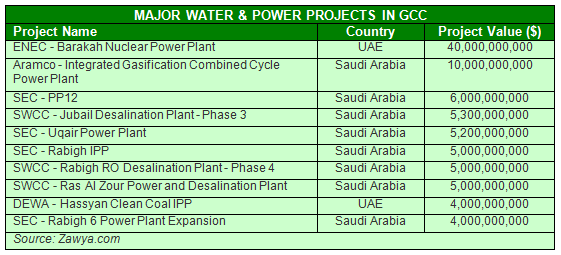
"However, the site faces challenges in supplying the freshwater necessary to remove dust and sand that accumulates on the solar panels," UN reported.
"Nevertheless, a 100 MW concentrated solar power project remains in preparation nearby; it will extend over an area of 2.5 square kilometers and have a solar field of 768 parabolic trough collectors to generate clean, renewable electricity."
Qatar is also looking to meet 80% of its freshwater needs through a 1,800 MW solar-powered water desalination plant.
LIQUID INVESTMENTS
Gulf governments are investing heavily to ensure their rising water needs are met. Booz & Co. estimates that the GCC is expected to invest USD 100 billion to address water scarcity from 2011-2016.
Saudi Arabia announced projects worth USD 6.3 billion last year, and has initiated an independent water and power project (IWPP) program to encourage private sector participation.
"Projects worth around USD 15 billion have been ordered since Saudi Arabia decided to push ahead with its IWPP program," according to Business Monitor International's Q4 2103 report on the country. "They are set to add over USD 1 billion cubic meter per day to the nation's water supply and nearly 10 gigawatts (GW) of power capacity. These have made Saudi Arabia a hotspot for international engineering firms and foreign investment."
Saudi Arabia's 880,000 cubic meter per day Shoaiba 3 desalination plant is the world's largest thermal desalination plant, although the 1,025,000 cubic meter per day Ras Al Khair project is expected to overtake it.
The Gulf states are also discussing plans to build a USD 10.5 billion pipeline from Oman to Kuwait to build a network of water grid. While it's at an early stage, the project highlights the water security concerns among Gulf authorities.
Another way to cut water consumption is energy conservation and lifting subsidies on water and power sectors. On a per capita basis, Saudi Arabia and the United Arab Emirates consume 91% and 83% more water than the global average, and about six times more water than the UK, according to Booz.
While cutting energy subsidies are a politically sensitive issue, Gulf governments will need to move on multiple fronts to manage water and energy demand. In addition, rapid desalination is increasing greenhouse gas emissions, which will require careful consideration to be able to achieve water security without sacrificing the environment.
"Projects aimed at using alternative and renewable energy sources such as solar, wind and biogas from wastewater can help to decouple carbon intensive energy production and the growing need for water desalination," the UN reported. "The importance of integrated management approaches to water and energy resources as well as conservation efforts have been recognized by all countries at the highest level."
The feature was produced by alifarabia.com exclusively for zawya.com.
© Zawya 2014




